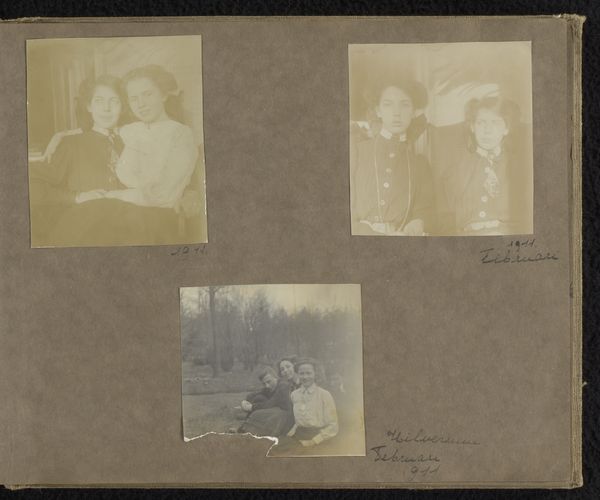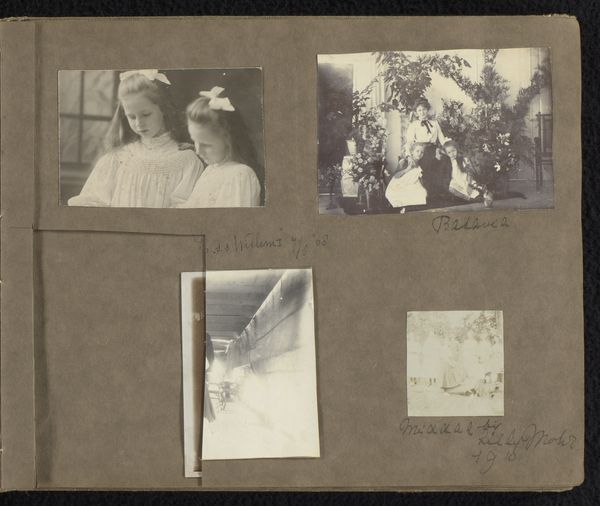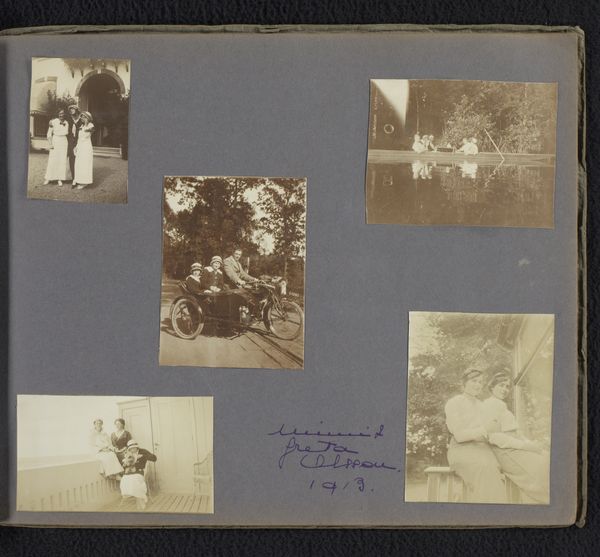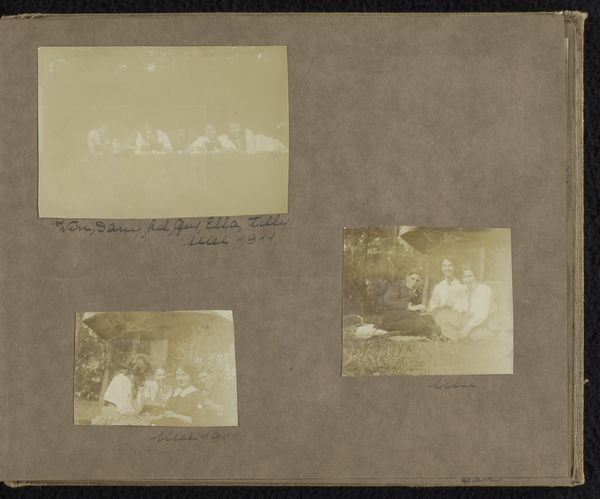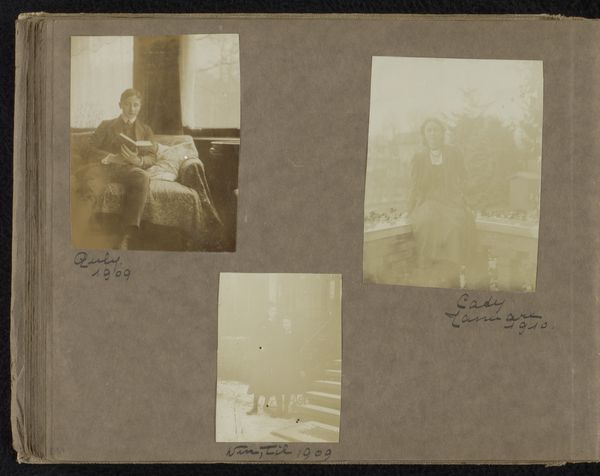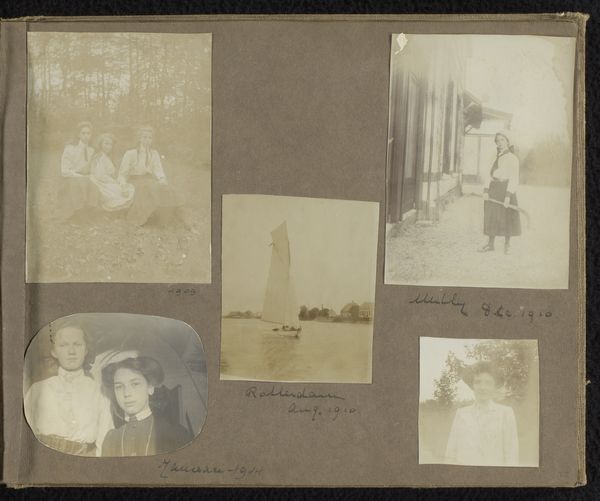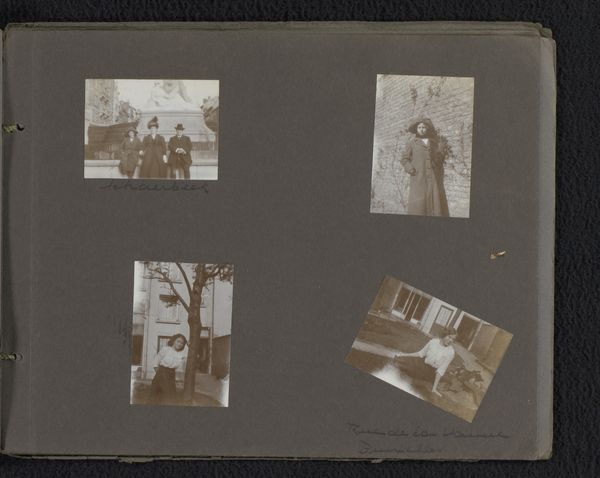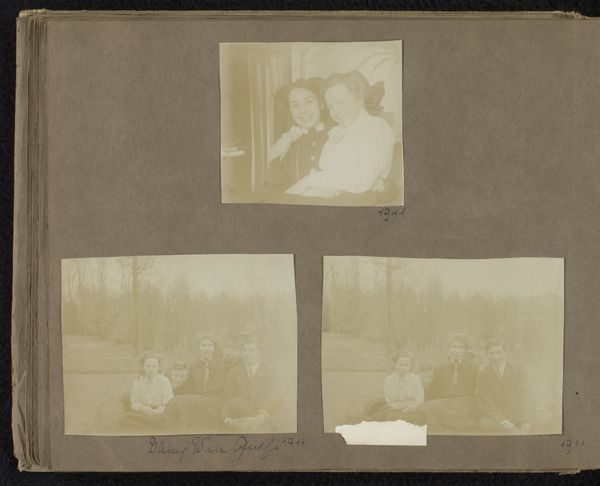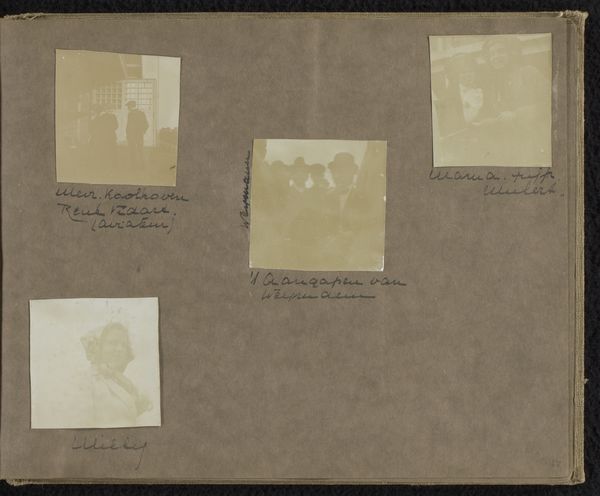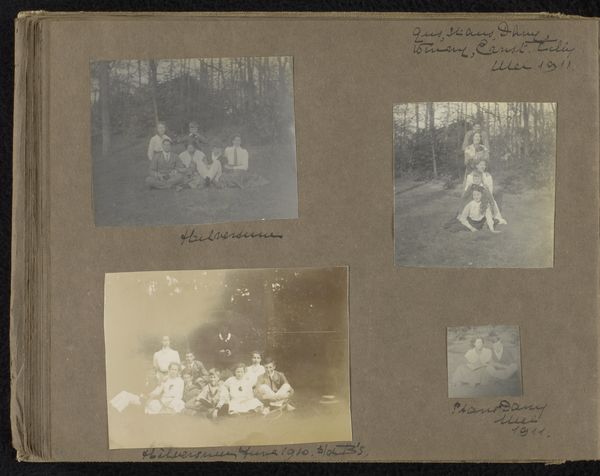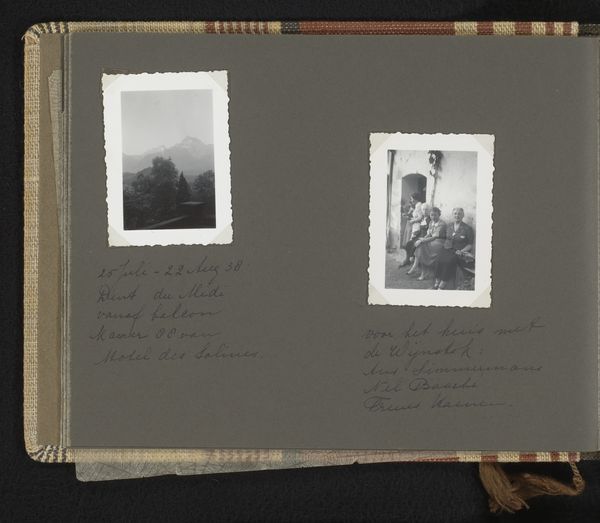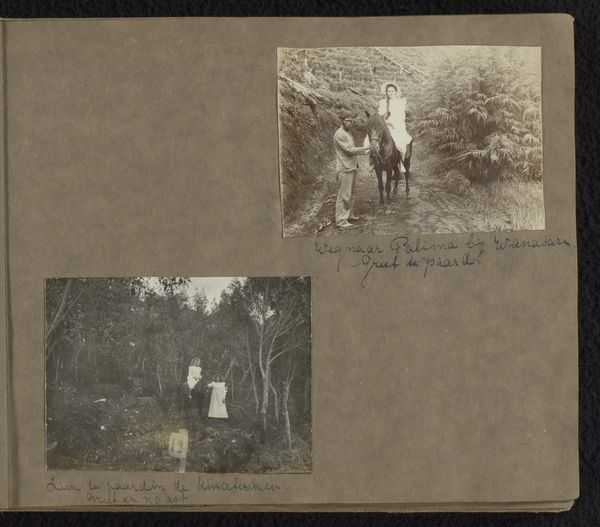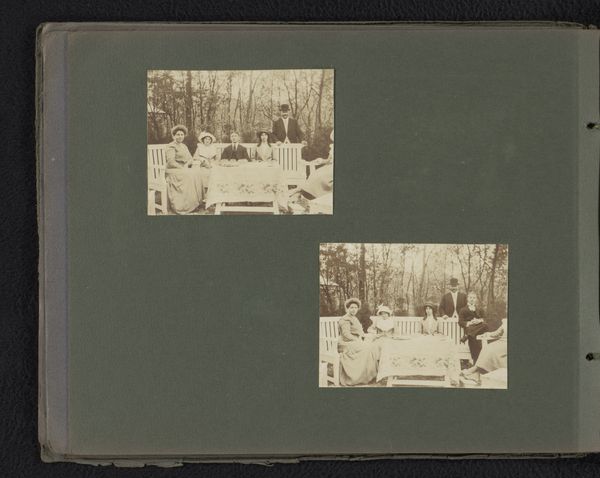
Drie foto's van Loentje Onnen met Winny Uhlenbeck, Willy Onnen en een vrouw in een besneeuwd landschap Possibly 1911 - 1912
0:00
0:00
photography
#
portrait
#
still-life-photography
#
pictorialism
#
photography
Dimensions: height 203 mm, width 253 mm
Copyright: Rijks Museum: Open Domain
Curator: Here we have “Drie foto's van Loentje Onnen met Winny Uhlenbeck, Willy Onnen en een vrouw in een besneeuwd landschap,” likely created between 1911 and 1912 by Carolina (Loentje) Frederika Onnen. It is a photograph. Editor: What immediately strikes me is the collage-like arrangement; it has a distinctly sentimental, intimate feel. The sepia tones evoke a sense of nostalgia. Curator: It is definitely meant to evoke nostalgia! Onnen was part of a movement called Pictorialism. Artists like her believed photography could be art through manipulation of the image – soft focus, special printing processes… things that separated the final product from mere documentation. Editor: And you see that clearly here; that out-of-focus element softens all the edges of the figures and landscapes in order to render them artistic and not simply indexical. Note especially the use of oval and rectangular picture planes as formal compositional gestures to direct the gaze to important aspects of each scene. Curator: The portraits suggest a closed social circle—members of her family and closest associates. The photograph taken in the snowy landscape perhaps signals travel, or adventure, during a time when women had only recently found more freedom in society. Editor: Yes, the play with composition—oval to imply a mirror reflecting nature, as well as other more squared shots depicting intimate poses indoors—helps to distinguish the different scenes of her world. It provides very gentle and yet effective structure to the collection, offering multiple vanishing points across different emotional and intellectual registers. Curator: Beyond the formal innovations, it humanizes these figures in time. This feels like it's intended to communicate Onnen's inner world as much as her surroundings. Editor: Precisely, each formal element adds to a subjective snapshot of memory and lived existence in its specific temporal register, offering various avenues through which we perceive life as filtered and interpreted across time and the world at large. Curator: Thank you for that visual deconstruction. It helps to demonstrate the way Onnen approached representing the everyday social relationships in her life during this crucial period of photographic experimentation. Editor: Indeed. It’s wonderful how this work prompts us to reconsider the relationship between memory, the social world, and formal arrangements as both intimately personal and reflective of broad structural constraints across diverse cultural and emotional planes.
Comments
No comments
Be the first to comment and join the conversation on the ultimate creative platform.
